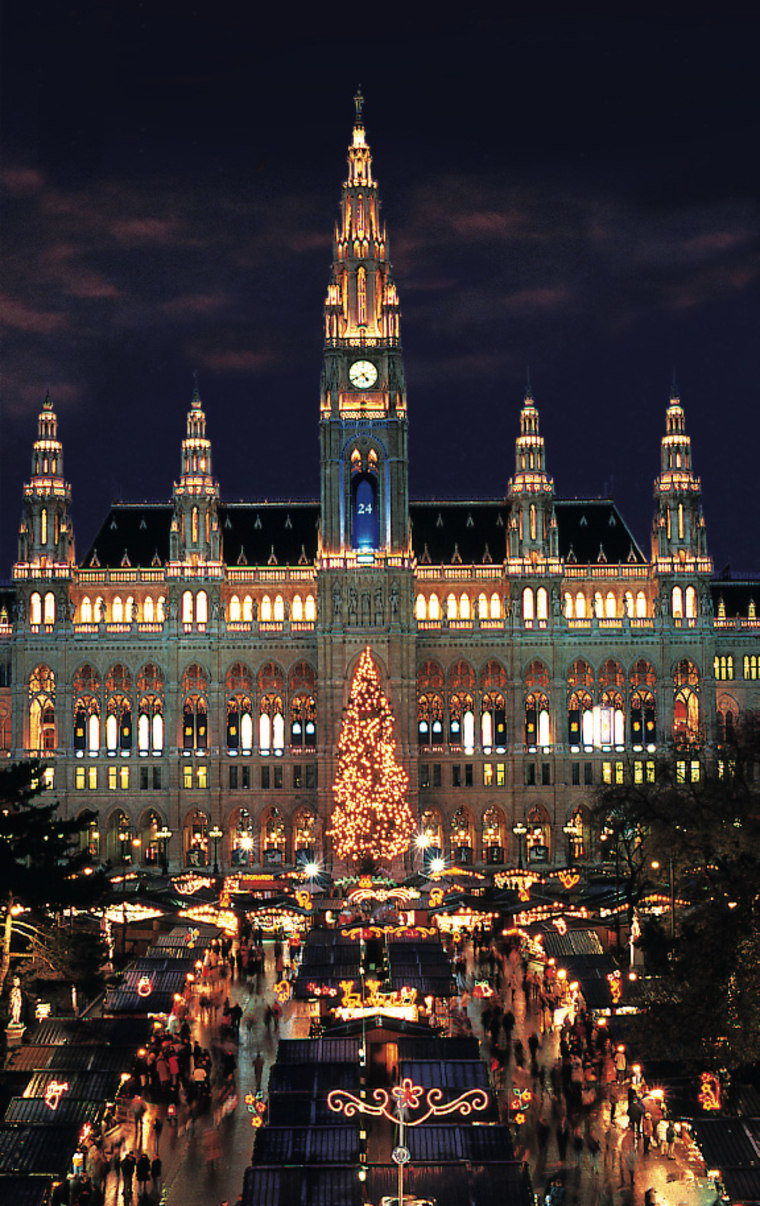You haven’t experienced Christmas lights until you’ve seen nearly four miles of them artfully hung in patterns dictated by Tiffany’s head designer in Copenhagen’s famed historic amusement park, Tivoli Gardens—and that’s not counting the 1,800 strands dramatically draped on the lakeside willows.
Copenhagen celebrates Jul (as in "yuletide") in high style, with its famed Christmas market the centerpiece. Stalls stocked with fine handmade crafts, including traditional figurines of clog-clad elves in pointy red caps, compete for space with vendors selling iced doughnuts slathered with black currant jam and hefty cups of gløgg, a steaming hot mulled red wine laden with raisins, almonds, cinnamon sticks, and cloves—all of which, for good measure, are steeped in aquavit or schnapps.
Christmas in Europe is a time for elaborate pastries straight out of a medieval cookbook, for lyrical midnight masses in Gothic churches, and for the upholding of quirky local traditions—in many countries, Christmas just isn’t complete without mischievous pixies, kindly witches (Rome), treacherous demons (Salzburg), or an 8,000-pound fruitcake (Dresden).
But however else Europeans celebrate the Yuletide season, Christmas still centers around an Advent market that, in most cases, has filled the square before the cathedral each December for hundreds upon hundreds of years. Many markets start on the Friday before Advent, which is four Sundays before Christmas Eve; most end on December 24, especially in Germanic countries, where Christmas Eve is set aside for trimming the tree at home. Others keep celebrating until Epiphany on January 6.
These markets are where the romance of the holiday comes alive in grand tradition—smells of gingerbread and roasting sausages waft through the cold air, handmade ornaments adorn ancient fir trees, master glassblowers and other artisans ply their crafts in wooden stalls, shoppers bustle past Gothic church facades and half-timbered houses, pausing to sip their glühwein, heavily spiced and mulled "glow wine"—the piping-hot beverage of choice at any self-respecting Teutonic Christmas market.
This is what Christmas should be—a holiday free of mall Muzak and the frantic need to lay your hands on the superstore’s last Tickle Me Xbox. It’s an old-world Christmas of heartfelt caroling and wooden toys, where every gift is crafted by hand and Santa hasn’t outsourced his workshop to China. For a few precious frost-nipped weeks, these museum-piece cities of Olde World Europe flicker back to the Middle Ages—not the ossified medieval throwbacks of soot-blackened cathedrals and tourist-bedeviled museums, but the living, breathing yesteryear of a bustling outdoor marketplace.
A few practical notes: It’s wise to book as far in advance as possible in these Christmas hotspots, especially for trips between Dec. 15 and Jan. 1 and definitely for Dec. 24 and 25. That goes not only for your lodging but also for restaurants, many of which close on Christmas Eve and Day; those that are open usually offer a set-price feast and book up fast with locals.
